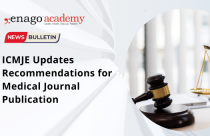Experts Take on “Your Paper, Your Way!” An Initiative by Elsevier

“Your Paper Your Way” (YPYW) is a concept that was introduced in mid-2011 by Elsevier. Currently, many Elsevier journals are part of this project. Your Paper Your Way allows authors to submit their papers without strict formatting or referencing requirement. It challenges the current scenario where researchers spend a lot of time and effort in formatting their papers. Many times, the paper is rejected and the authors are forced to repeat the entire activity for the next journal. YPYW aims at simplifying the submission process and saving the valuable time of the researchers.
Our Experts’ opinions on Your Paper Your Way
This approach can be particularly valuable if one has already formatted a paper for another journal, only to have it rejected; the submission to Elsevier’s can be done almost immediately without a reformat.
However, I have always felt that any document is more likely to be well received if it is as polished as possible. While doing the work to match any unusual requirements might well be a waste of time, submitting a paper in a format with which reviewers are likely to be comfortable still is wise. For example, while single-spacing is permitted, double-spacing is what they are used to seeing; I would use that. The change takes only a moment in any modern word processing program. Also, consistency in citation and reference formats is critical, whether or not they match those of one’s target journal. Anything else is jarring.
I do applaud Elsevier’s flexibility on this. Unless/until other publishers match the approach, it can only expand their pool of submissions, which will help them to maintain their high standards.
Academia is now a publish-or-perish world dominated by a corporate mindset. Elsevier and two other publishers own 20,000 of the world’s scholarly journals, so let’s not kid ourselves: YPYW was strictly a business decision.
(PhD in Comparative Literature, 33 years of experience as an Editor and Peer Reviewer, USA)
Let’s face it, academic publishing these days is not so much about scholars sharing knowledge with their colleagues as it is large publishing companies reaping huge profits.
Academia is now a publish-or-perish world dominated by a corporate mindset. Elsevier and two other publishers own 20,000 of the world’s scholarly journals, so let’s not kid ourselves; YPYW was strictly a business decision.
In the scheme of things, formatting a Manuscript does not take that much time. There is even software like Zotero that can do this. As one author commented, “formatting references takes me not more than 2% of paper writing time…” (http://svpow.com/2012/11/27/the-single-greatest-thing-thats-ever-been-said-in-author-instructions/).
A properly formatted paper can be easier for editors and peer reviewers to read and evaluate. Style rules reflect conventions and facilitate the readers understanding. The practice of attributing sources that have influenced or contributed to one’s creative work is still critical to scholarly research. Authors may say that style rules are “arcane” or “outdated,” or assert that “I’m not a secretary,” but surely the translator of a book that an author has used in his research would want her work acknowledged. Rather than characterizing such rules as “petty details,” why not simply look up the translator’s name online and include it in a list of references?
The YPYW initiative is a big win for Elsevier if researchers take the bait. Currently, Elsevier charges universities costly fees to access their journals, and charges authors to have their articles published once they are accepted. Buried in Elsevier’s rhetoric about being “author friendly” is an acknowledgment that YPYW “allows us to capture scientifically excellent papers that almost made it into one of the top flight generalist journals, but were considered too specialist to be accepted…” So, don’t more submissions equal more fees?
Perhaps scholars should consider the boycott of Elsevier organized by the esteemed UK mathematician Tim Gowers in January 2012. Gowers and some of his colleagues have taken steps to lift the veil on academic publishing.
In these recent times in which it is difficult to get research funding, allowing scientists and clinicians to focus more of their time on their research, will help them to obtain the data that they need to compete for research funding.
(PhD in Neuroscience, Researcher and author of many important papers, USA)
Most communications and literature reviews are now done electronically, there is no need to format papers in a particular way. Formatting stemmed from the need to organize papers logically and the constraints of printing equipment. Because few, if any, papers are still printed on paper, these constraints are not as critical as they once were. However, papers will still need to be presented in a clear, well-written way that reviewers can easily read on their computers. With this change, scientists and clinicians will be able spend much less time formatting their papers and focus more on their research. There will be no need to spend hours placing the formatting or correct punctuation for references. In addition, good papers will not be rejected only because of simple formatting mistakes. In these recent times in which it is difficult to get research funding, allowing scientists and clinicians to focus more of their time on their research, will help them to obtain the data that they need to compete for research funding. In conclusion, flexible manuscript submissions will allow researchers to focus more on their work and help them to be more competitive in their fields.
I wholly agree with YPYW sentiment. However, certain guidelines must be implemented to ensure clarity and quality. Provided that journals adhere to these, YPYW will be valuable to authors with little impact on journal readability and on editorial work.
(PhD in Physics & PGDipSc in Biological Sciences, New Zealand)
I agree with YPYW concept. As an editor for scientists whose first language is not English, I am frequently asked to check or implement formatting. Despite my strong command of English, I find that many formatting instructions are confusing and ambiguous. The burgeoning need to publish at all cost (or risk losing grants and prestige) has led to a proliferation of submitted papers and a high rejection rate. Authors do not need to be burdened with overly-stringent formatting requirements, which vary widely among journals, if their paper has an 80% chance of rejection. I have also noticed a trend among journals to target specific readerships, so your paper may be rejected not because it is poor quality, but does not fit the journal’s target audience or topic base. This situation compounds the formatting problem, especially for non-native English speaking scientists.
I wholly agree with YPYW sentiment. However, certain guidelines must be implemented to ensure clarity and quality. Provided that journals adhere to these, YPYW will be valuable to authors with little impact on journal readability and on editorial work. On the other hand, if the style of a particular journal (such as Physical Review) varies from article to article, the sense of coherence and consistency may be lost. To decide whether this presents a problem, I would like to see a few real examples of “Your Paper Your Way!”.
The over-riding requirement for scientific and medical publications is that they accurately describe and review investigations or experiments, and are based on sound scientific principles, with appropriate interpretation of the results. In comparison to these requirements, the format that the author uses to provide information is of secondary importance.
(PhD in Experimental Pathology, Member of many New Zealand and Australian review boards, New Zealand)
When considering the pros and cons of YPYW concept it is of paramount importance to establish that this will not reduce the editorial rigor that manuscripts are subjected to prior to publication. The over-riding requirement for scientific and medical publications is that they accurately describe and review investigations or experiments, and are based on sound scientific principles, with appropriate interpretation of the results. In comparison to these requirements, the format that the author uses to provide information is of secondary importance. That is not to say that good writing style, conventional layout and order of sections in a manuscript are unimportant, but that minor transgressions should not come before a novel finding or interesting scientific theory. I am therefore encouraged that the majority editors state that YPYW manuscripts do not require any more work than traditional manuscripts and that formatting irregularities can be corrected easily at the typesetting stage. My opinion is that as long as YPYW manuscripts maintain the high standards required for publication, this simplification of the submission process should be considered by all journals and publishing houses.
For the ever-busy scientist, not having to reformat for each journal submission is a welcome relief. Once an article is accepted, the incentive for both the journal and author to improve the presentation of an article increases.
(PhD in Biology from University of Oxford, have published many papers in biology, USA)
A common complaint from scientists is that the path to publication becomes more difficult each year. Some publishers have offered new editorial options, for example the PLoS, Nature, and other journal “families” allow manuscripts and peer reviews, including reviewer identities, to be shared between journals. Under this an article rejected after careful peer review by PLoS Biology due to a low priority score might be accepted by PLoS Pathogens without additional work by the author. Perhaps an even more author-friendly innovation was first introduced by the Elsevier termed YPYW. For the ever-busy scientist, not having to reformat for each journal submission is a welcome relief. Once an article is accepted, the incentive for both the journal and author to improve the presentation of an article increases. A few drawbacks exist. Some journals prefer different styles of manuscripts, e.g. two prominent molecular cell biology journals, The Journal of Biological Chemistry and Journal of Cell Biology, have overlapping scopes, but generally publish either relatively short or long articles, respectively. A manuscript rejected by one of these journals might benefit from rewriting before submission to the other. Also, some journals, such as Science, allow footnotes and references to be combined. Incorporating or removing this style after acceptance might add increased complexity to the post-acceptance publication process. Nevertheless, this and other new publishing schemes represent important steps towards straightening the often winding road to publication.
A further potential advantage of the simpler process is that it may allow authors to embed figures and tables in their natural positions in the article, which would make the review process simpler because the paper would be easier to understand.
(Experienced and Published Analytical and Physical Properties Chemist, Winner of Scientific Excellence Award, USA)
The traditional practice of most journals that requires authors to adhere to time-consuming formatting requirements for an initial submission, when the chances are high that any one paper will be rejected, imposes a significant burden on authors. Presumably, this traditional practice offers significant advantages for reviewers and subsequent publishing after acceptance. However, I think that an industry examination of the advantages and disadvantages of the practice are warranted to understand if it should be continued or modified. A further potential advantage of the simpler process is that it may allow authors to embed figures and tables in their natural positions in the article, which would make the review process simpler because the paper would be easier to understand. The advantages of the older submission process are minimal and that the advantages of the simpler process are significant.
This approach should actually require less time for editors, who are more interested in resolving language and content issues to provide a paper that is easy to read and logically presents the rationale, procedures used, results, and discussion of the paper’s content.









